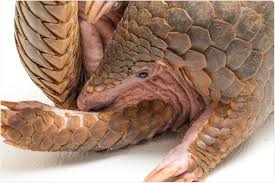Mucormycosis also known as Black Fungus.
Mucormycosis (previously called zygomycosis) is a rare but serious angio-invasive infection caused by a group of fungi called mucormycetes.
Spores of these ubiquitous fungi (commonly found in soil, fallen leaves, compost, animal dung and air) can be inhaled and then infect the lungs, sinuses, and extend into the brain and eyes. Less often, infection may develop when the spores enter the body through a cut or an open wound.
Mucormycosis is not a contagious disease, it cannot be spread from one person to another.
Mucormycosis mainly affects people who are immunocompromised, or patients already infected with other diseases. High risk groups include people with diabetes (especially diabetic ketoacidosis), solid organ transplantation, neutropenia (low neutrophils, a type of white blood cells), long-term systemic corticosteroid use, and iron overload (hemochromatosis). The risk is high for people living with HIV, and those using immunomodulating drugs, including the anti-fungal voriconazole in some high-risk groups.
Clinical presentation is classified according to the organ involvement. It can be rhino-orbital cerebral, pulmonary, cutaneous, gastrointestinal, or disseminated.
Mucormycosis is an aggressive, life-threatening infection requiring prompt diagnosis and early treatment. Treatment usually consists of antifungal medications and surgery.
COVID-19 Associated Mucormycosis
Fungal infections, including mucormycosis, aspergillosis and invasive candidiasis, have been reported in patients with severe COVID-19 or those recovering from the disease and have been associated with severe illness and death.
India has reported a recent surge in mucormycosis cases. Prevention of COVID-19 associated mucormycosis needs to focus on aiming for better glycaemic control in COVID-19 patients and monitoring the use of systemic corticosteroids in treating severe cases.
Outpatient use of systemic corticosteroids/other immunomodulating drugs for mild or moderate patients with COVID-19 should be avoided. Health care facilities need to strengthen their infection prevention and control (IPC) programmes to prevent healthcare-associated outbreaks.
Disease Burden
The incidence rate of mucormycosis globally varies from 0.005 to 1.7 per million population.
In India, prevalence of mucormycosis is estimated as 140 per million population, which is about 80 times higher than the prevalence in developed countries.
In a systemic review and meta-analysis of 851 cases reports published in 2018, death was reported in 389/851 (46%) patients. Case fatality was observed to be highest among patients with disseminated mucormycosis (68%) and lowest in those with cutaneous disease (31%).
Following the surge of COVID-19 associated mucormycosis and the Government of India directive, several states in India made mucormycosis a notifiable disease in May 2021. This will provide better insights into the disease burden, population characteristic, risk factors, clinical spectrum and outcomes of these patients.
Current trends indicate that the surge is higher in those with pre-existing diabetes, those on systemic corticosteroids, and is being observed in both people with COVID-19, and those recovering from the disease.
Transmission of Mucormycosis Black Fungus
It is not contagious and does not spread by contact of person to person.
This fungus is found in the environment. Transmission occurs through inhalation, inoculation, or ingestion of spores from the environment.
Although most cases are sporadic, healthcare-associated outbreaks have been linked to adhesive bandages, wooden tongue depressors, hospital linens, negative pressure rooms, water leaks, poor air filtration, non-sterile medical devices, and building construction.
It most commonly affects the sinuses or the lungs after inhaling fungal spores from the air. In such cases, it may spread to brain and eyes.
It may also occur on the skin after a cut, burn, or other type of skin injury gets infected.
Symptoms of Mucormycosis Black Fungus
The symptoms of mucormycosis depend on where in the body the fungus is growing. The most common presentation is a sinus infection (sinusitis) that is accompanied by nasal congestion, nasal discharge, and sinus pain. A fever and headache may also occur.
Type of Mucormycosis
Diagnosis of Mucormycosis Black Fungus
Early recognition, diagnosis and prompt administration of appropriate antifungal treatment and surgical debridement (as needed) are important for improving outcomes for patients with mucormycosis.
Diagnostic methods include biopsy and fungal staining (KOH mount), which remains the mainstay of laboratory diagnosis. Facilities where fungal culture and susceptibility testing are available can help to confirm the species of mucormycosis. Treatment initiation, however, should not wait for fungal culture results.
Imaging tests such as a CT scan of lungs, sinuses, or other parts of body, depending on the location of the suspected infection, may also be used to support the diagnosis.
Treatment of Black Fungus Mucormycosis
Mucormycosis is difficult to treat. It may sometimes requires both intravenous antifungal therapy and surgical excision, thus necessitating a multidisciplinary team approach in a facility setting.
Liposomal amphotericin B is the drug of choice and needs to be initiated early. Other antifungals like posaconazole, or isavuconazolehave also been described for treatment.
The Directorate General of Health Services (DGHS) has released detailed guidelines on managing mucormycosis in COVID-19 in India.
The overall prognosis depends on several factors, including the rapidity of diagnosis and treatment, the site of infection, and the patient’s underlying conditions and degree of immunosuppression. The overall case fatality is approximately 50%, although early diagnosis and treatment lead to better outcomes.
Prevention from Black Fungus Mucormycosis
Prevention of COVID-associated mucormycosis needs to focus on addressing the underlying risk factors:
- Aiming for better glycemic control in those with diabetes.
- Appropriate use of systemic corticosteroids.
- Prevention of unnecessary use of antibiotic, antifungal and other immunomodulators.
- IPC measures at the facility level are essential toprevent the environmental spread of this pathogen.
These include:
Sterilization and disinfection of the equipment used by multiple patients (tracheal tubes, ventilators), ventilation systems ( if there is poor ventilation in the hospital that can contribute to dampness and dust).
Proper wound management (bandage, tape, adhesives, including tapes to secure medical devices such as endotracheal tubes, ostomy devices must be sterilized and changed regularly),proper line management in health facilities.

















































